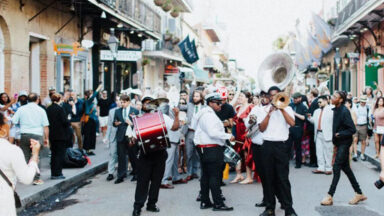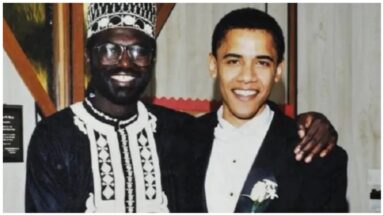Students from Norfolk’s Booker T. Washington High School stage set in at Granby Street’s Woolworth’s lunch counter. All Photos: New Journal and Guide archives
![]()
This Black History special will be brought to you in three parts
By Dr. Kelton Edmonds,
Special to the New Journal and Guide
February 1, 2020 marks the 60th anniversary of the launch of the historic Sit-in Movement, when four African-American freshmen from North Carolina A&T State College (now University) in Greensboro, NC sparked the non-violent and student-led wave of protests that ultimately resulted in the desegregation of F.W. Woolworth and other racially discriminatory stores.
The brave freshmen from NCA&T, who would later be adorned with the iconic label of the “Greensboro Four”, consisted of David Richmond, Franklin McCain, Joseph McNeil, and Ezell Blair Jr. (Jibreel Khazan). On February 1, 1960, the Greensboro Four bought items at Woolworth’s, then sat at the ‘whites-only’ lunch counter and refused to leave until they were served. Although waitresses refused to serve them, in accordance with the store’s racist policies, the four would continue their protest and in the following days and weeks would be joined by more students from NCA&T, the nearby all-women’s HBCU Bennett College and students from other nearby colleges and high schools.
In a 2003 interview, Khazan (formerly Blair, Jr.) reflected on the daily threats of violence and verbal assaults from white antagonists, as one caller reached him on the dorm hall phone and bellowed, “…executioners are going to kill you niggers if you come back down here tomorrow, you and your crazy friends.”
White student allies who protested alongside black students were not immune from death threats either, as Khazan recalled a white student protester explaining that their college president was threatened by an anonymous caller saying, “…if those nigger loving bitches come downtown again and sit with those niggers, we going to kill them and burn your school down.”
The Greensboro students persisted nevertheless, and soon, the protests that flooded the lunch counters of the segregated store would spread to other cities throughout the South beginning in North Carolina cities such as Elizabeth City, Charlotte and Winston-Salem, in addition to cities in Virginia.
In Virginia
Virginia played a primary role in the Sit-in Movement, as Hampton, Virginia became the first community outside of North Carolina to experience sit-ins on February 10th.
Initially, three students from Hampton Institute sat-in at the downtown Woolworth’s lunch counter in Hampton and were refused service. As a testament to the veracity of the movement, within two weeks, over 600 students in Hampton were sitting-in.
On February 12th, sit-in protests spread to Norfolk, as 38 black protesters staged a sit-in at the Woolworth lunch counters on Granby and Freemason streets.
Similar demonstrations were held in Portsmouth, in the mid-city shopping center at lunch counters in Rose’s Department store on February 12th and at Bradshaw-Diehl department store later that week.
Reyes Nearly Defeats Jones in UFC 247
Led by students from I.C. Norcom High school, the Portsmouth sit-ins would be one of the few cities that experienced violence, albeit initiated by white anti-protesters armed with chains, hammers, and pipes and resulting in retaliation from the black students after being attacked.
Violent episodes were the exceptions and not the rule of the massively spreading Sit-in Movement. In nearly all sit-in cities, black protesters made immeasurable efforts to avoid violence at all cost since the movement and training centered on non-violent demonstrations in confronting inequality.
Edward Rodman, high school activist in Portsmouth, admitted they were initially unorganized and untrained in passive resistance, which played a role in their reactions to the violent anti-protesters. The Congress for Racial Equality (CORE) connected with the Portsmouth student protesters and over the next few days conducted intense and successful non-violent workshops with the young people. Soon after, the Portsmouth students reignited their movement without incidents of retaliation toward violent antagonists.
North of Hampton Roads, Richmond, Virginia experienced sit-ins as well as Baltimore, MD, and dozens of other cities by the end of February. By mid-April, sit-in protests reached all southern states involving thousands of black student activists and sympathizers.
The coordinated demonstrations of thousands of black student protesters and sympathizers put insurmountable pressure on Woolworth’s, as it became nearly impossible for regular customers to purchase items, eat at the lunch counters and even enter the store in many instances.
On May 25th, the sit-in movement received a major victory as lunch counters at Woolworth’s in Winston Salem, NC desegregated. Soon after, Woolworth’s in Nashville, TN and San Antonio, TX also integrated. Finally, on July 25, ground zero, Woolworth’s in Greensboro integrated its lunch counter. With the possibility of facing bankruptcy, F.W. Woolworth totally acquiesced and desegregated all of its lunch counters throughout the nation by the end of the summer of 1960.
SNCC would prove to be an indispensible organization that not only championed directly confronting Jim Crow racism on numerous levels through organized protests and massive voter registration drives, but SNCC also further popularized the concept of participatory democracy and was the first major Civil Rights organization to evolve toward seriously embracing principles of black power ideology under Stokely Carmichael’s (Kwame Ture) leadership in 1966.
Another legacy of the 1960 sit-in movement was that it offered the inspiration and blueprint for the second and more colossal wave of mass student protest in Greensboro in 1963. The 1963 student demonstrations in Greensboro would be even more locally successful than their predecessor as they desegregated all remaining businesses in downtown Greensboro and the student leader of the second wave of sit-ins, Jesse Jackson, would parlay his leadership in the student protests onto the national Civil Rights stage throughout the 20th century. Similar to Greensboro, other cities throughout the South would experience a second and even third wave of similar protests to successfully desegregate other remaining businesses throughout the decade.
Dr. Kelton Edmonds is a Professor of History at California University of Pennsylvania. His primary research is on Black Student Activism in the United States. He is a native of Portsmouth, VA and graduated from I.C. Norcom High school in 1993. He holds B.A. and M.A. degrees in Secondary Education-History from North Carolina A&T State University. He earned his Ph.D. in 20th Century US History from the University of Missouri-Columbia.
Photo cap
Students from Norfolk’s Booker T. Washington High School stage set in at Granby Street’s Woolworth’s lunch counter. All Photos: New Journal and Guide archives



Recent Comments